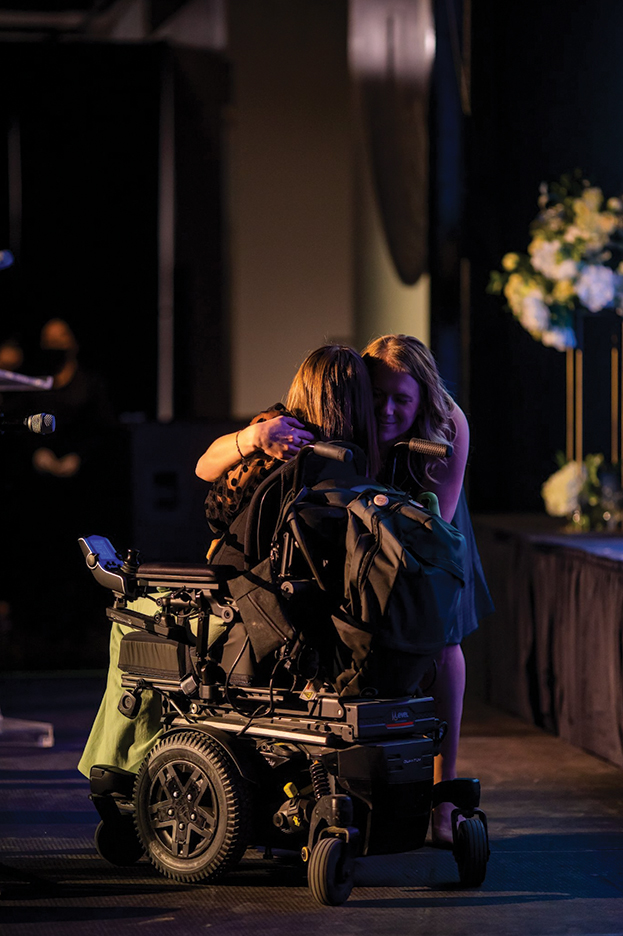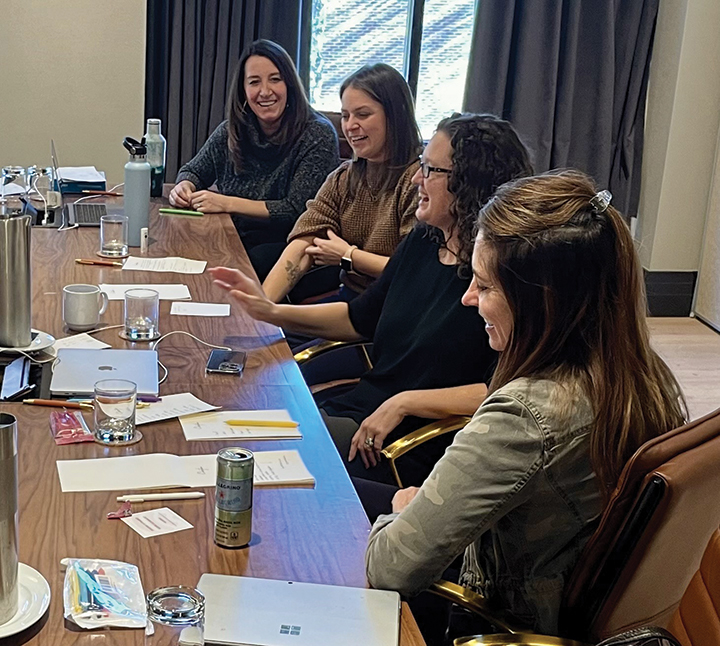EMPOWERING NONPROFITS OF ALL SIZES TO MAXIMIZE IMPACT
BY SHALEEN DESTEFANO
Philanthropy Expert is more than just a fundraising consultancy—it’s a dedicated partner in their client’s mission to create meaningful change. They work alongside nonprofits, not just as advisors but as teammates, embracing their client’s goals as their own. From strategy to execution, they promise to be in the trenches with you, celebrating victories, overcoming challenges, and sharing every moment of the journey, to laugh and cry alongside you—because making a difference isn’t easy, but together, they know we can do more good in the world. It’s because of this thoughtful mission, that we have been fan-girling them from afar for over eight years. We sat down with their Founder and CEO, Meleanie Ulle, also a dear friend, and head writer of our monthly “Making A Difference” pieces, to learn more.
 Being proudly headquartered in Colorado, how does the state’s culture and community influence your company’s values, mission, and operations?
Being proudly headquartered in Colorado, how does the state’s culture and community influence your company’s values, mission, and operations?
Everything about Philanthropy Expert is informed by Colorado. As someone who was born and raised in Denver and the daughter of a North Sider, I feel extremely connected to my home, and I care about this community viscerally. Sometimes I wish I didn’t! I have an almost primal devotion to our state. Several of our team members are Colorado-born and bred, and our transplants are equally committed to our Colorado way of life. The company’s most critical value is laughter and my favorite thing about Colorado is that it never takes itself too seriously. Look at our airport and its campaign hyping the conspiracy theories around aliens underground, or Blucifer, or the Blue Bear that spies on folks in the convention center. We are light-hearted people. We are so lucky to live and work in this beautiful state with our open-minded, positive, and extremely fun residents.
 You work with nonprofits, foundations, and campaigns worldwide. How do you balance local roots with the global reach of your clients?
You work with nonprofits, foundations, and campaigns worldwide. How do you balance local roots with the global reach of your clients?
Our global and national work is great and important, but I always prefer to work more locally. Our roots run extremely deep in Colorado and the Mountain West and my heart lives here so I will always have a bias toward collaborating with our local community organizations. I enjoy working nationally, but nothing beats investing in our home-grown nonprofits and partnering with their exceptional leaders.
We have the incredible gift of living here so the more work we do locally, the more our own families will thrive.
Your work spans from the front-line to the boardroom. Can you share how your approach ensures alignment between on-the-ground operations and high-level decision-making?
My business partner, Erin Flores, and I both believe that you have to empower the folks working on both sides and everyone has to be committed to the same standard of “doing what you say you will do.” When staff fail board members, there’s a problem. When board members fail staff, there’s a problem so you must work on both sides to be successful.
If you’re able to get both staff and board to have consensus on what they are expected to deliver and then an additional layer of accountability, then you’ve cracked the code. That accountability piece is really important, particularly as it relates to boards. Board members need to hold one another accountable. It is not the Executive Director’s job to hold board members accountable. Board members must have high expectations of one another and correct failures. (And they should all read, “Crucial Conversations” by Joseph Grenny to learn how to have difficult conversations).
 What innovative strategies or tools do you employ to increase the flow of dollars in both directions for your clients?
What innovative strategies or tools do you employ to increase the flow of dollars in both directions for your clients?
We’re unique in that we do work on both sides of philanthropy, which is pretty unusual. I think that helps us to know what’s happening in the ecosystem in real time. When I am acting as a grant maker, I can see the challenges and stressors funders face, and when I’m on the nonprofit side, I can feel the frustrations of development officers and directors.
I think our ability to very honestly share how careless work, or failings of one side influence the other is our secret sauce. Telling a family foundation board that their application is too onerous results in an easier process for them and for the nonprofits they serve. Coaching a nonprofit to make giving easier for donors opens their organization up to more dollars. These may seem obvious, but I think folks would be surprised that these are common mistakes on both sides.
What are some of the most common challenges your clients face, and how do you help them overcome these obstacles?
Fundraising has been brutal for the past two years. Meanwhile, staff and board turnover are high, so naturally burnout is through the roof. We have so much empathy for our clients and I think our ability to keep them grounded in the knowledge that it’s not just them is reassuring. They’re in the same storm as many others, but they have to power through because things will get better. They always do. I raised money for an art museum during the great recession, so I know firsthand that the dark days are always temporary.
What trends are you seeing in philanthropy and nonprofit funding, and how do you help your clients adapt to these changes?
Corporate fundraising will continue to be challenging with uncertainty about the economy. Individual donors will be more consistent and will probably give more in 2025 than in 2024 or 2023. Foundation giving should loosen up a bit. It feels like nonprofits are doing more to address staff retention which has been tragically low in recent years.
In philanthropy, we’ve seen a decrease in DEI-related funding and more immediate funding for disaster relief. With so many climate-related disasters, I don’t see the trend toward increased immediate disaster relief going away.
How does your team’s expertise and experience shape the services you offer and the impact you achieve for your clients?
Our team is extremely talented, and their gifts are varied so we end up playing in a lot of areas like coaching, organizational change, executive searches, grant writing, event planning, foundation management, program development and more. Dear Lord, what don’t we do?
Erin is more focused on efforts to make policy and fiscal change in our communities by supporting projects like municipal bond campaigns, mill levies and working with local electeds to make big system level improvements, whereas I tend to focus on direct nonprofit or foundation work. We’re lucky to have a team with such a wide range of talents and skills to address whatever needs our clients have.
As your client base grows worldwide, how do you maintain the quality of your partnerships and ensure sustainable growth for both your company and your clients?
Most of our clients renew their engagements with us. I am so proud of this and believe it’s a real testament to the quality of our partnerships. We are an extension of their staff, and we feel very connected to their work. When we do not feel like there is a sincere partnership, it’s probably not going to be a good long-term fit. We are very adept at turning work away. We’ve gotten comfortable knowing when we aren’t a good match. When it’s a solid partnership, the sky is the limit and we’ve had successful client relationships that have been going strong for over 12 years.
How can our audience get involved and support the nonprofits you support?
We want your audience to support the organizations they care about. There are thousands of nonprofits here doing exceptional work and we’re happy to point folks in a direction if needed, but we would encourage your readers to invest in the organizations they already support. Maybe consider doing more through board service, volunteerism, or dollars. Donors are the lifeblood of the organizations they support, and though they may not know it, in the nonprofit world, we think of them as our extended family members. When they double down on their investments, that really makes a difference. And give where you live. I know we have a lot of transplants in Colorado who are still supporting the nonprofits “back home,” but you’re here now so find a few local nonprofits to sew some new seeds.
To learn more about their services or to get involved, visit philanthropyexpert.org.

